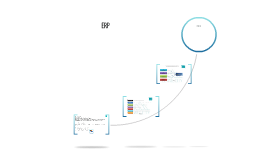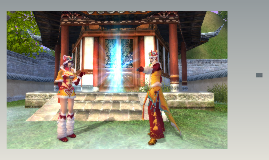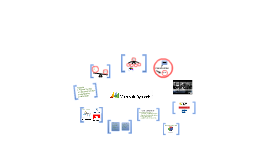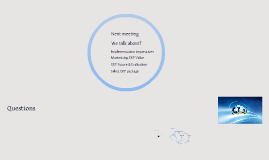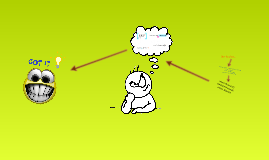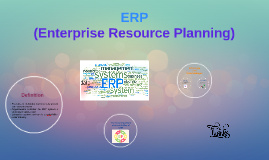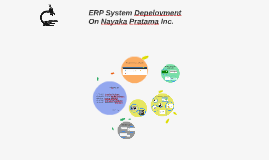ERP
Transcript: WHAT IS ERP? The Company Process ERP software (or enterprise resource planning software) is an integrated system used by businesses to combine, organize and maintain the data necessary for operations. ERP systems merge each of the company’s key operations, including the manufacturing, distribution, financial, human resources and customer relations departments, into one software system. For many companies, the ERP software is the heart of their operations and the backbone of the organization. Which consists of ERP? ERP Components Clients commonly realize the following benefits from ERP: - Increased operational effectiveness&productivity . -Timely and targeted information feedback system for Decision support . -Efficient inventory mangement . -Improved planning . - Improved customer service . -All units has the Same data base. -All system has one Update. -only one support &supplier. -Fast work process. -High customers satisfaction. -Smooth running and integrated machine (examples of which would be: 1-Centralised operations. 2-Multilanguage and currency. 3-Lower inventory and production costs. 4-Improved planning. 5-tighter integration of production whith sales and Distribution. 6-Tax advantages through improved asset mangement. 7-Removel of legency systems . 8-Time saved in data entry and reporting. 9-Increased performance and results measurement. 10-creates discpline and standards across the business. 11-ERP shares common data and practises across the entire organization and produces and accesses information in areal-time environment . Brief History of ERP The focus of manufacturing systems in the 1960's was on Inventory control. Most of the software packages then (usually customized) were designed to handle inventory based on traditional inventory concepts. In the 1970's the focus shifted to MRP (Material Requirement Planning) systems that translated the Master Schedule built for the end items into time-phased net requirements for the sub-assemblies, components and raw materials planning and procurement. In the 1980's the concept of MRP-II (Manufacturing Resources Planning) evolved which was an extension of MRP to shop floor and Distribution management activities. In the early 1990's, MRP-II was further extended to cover areas like Engineering, Finance, Human Resources, Projects Management etc i.e. the complete gamut of activities within any business enterprise. Hence, the term ERP (Enterprise Resource Planning) was coined. ERP Vendors Questions Why Do Companies Need ERP Systems? Example Maximizing ERP Value Select ERP package Problem Needs 1 7 ERP Inventory : Receive material Send for quality control Rejected material Monitor rejected stock Return rejected material to supplier Send accepted stocks to stores Conversion of unit of measurement Issue to cost centers Monitor consumption at each cost center Monitor critical stocks Monitor stocks for quantity and valuation Monitor stocks for reorder level Prepare requisition Enterprise resource planning DELIVERY 8" 2" 12 3 software packages MANGEMENT automated 9 5 MANUFACTRE ERP Future & Evaluation Next meeting GENERAL LEADGER Purchase : Receive requisition Monitor requisition as per stock Check availability with supplier Place orders Maintenance and automatic updation of suppliers and database Receive material Implementation imperatives Benefits History CRM SALES 8 We talk about? 10 R.M WAREHOUSE PURCHASE Process VENDOR Client Clear WAREHOUSE GOODS 2 4 6 integrated 11






